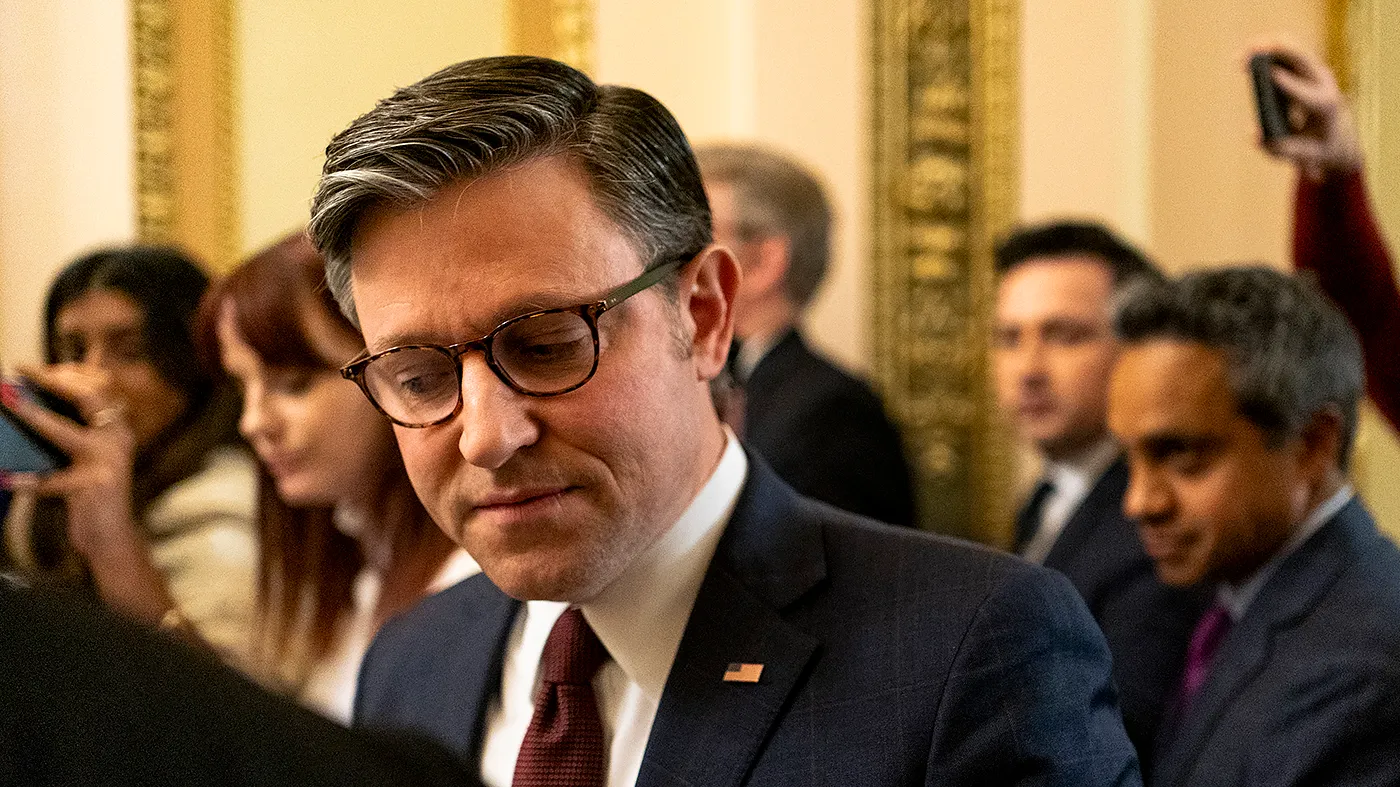Ken Wainstein wants his intelligence agency to operate like it’s 2024.
Wainstein’s often overlooked intelligence unit housed in the Department of Homeland Security was established in the wake of the 9/11 attacks. But the under secretary is seeking to reshape the office to focus on the latest threats menacing Americans. At the top of that list is border security and fentanyl trafficking.
In an exclusive interview with Bloomberg Government, Wainstein framed the changes as a necessary reset for an office that’s had an overly broad mission since its inception.
“Now 20 years later, it was time to step back and try to bring clarity to that mission and then look at our operations and make sure they are aligned with that mission,” Wainstein said.
The Office of Intelligence and Analysis, haunted by past management problems and operational blunders, will change its information collection priorities, ramp up border-related interviews, and help build a classified watch list of drug cartel members under an overhaul rolled out internally last month.
The shift responds to perennial questions about I&A’s value, as well as allegations of civil rights abuses. But while many homeland security professionals applaud the effort to refine the office’s mission and oversight, several powerful lawmakers and other critics continue to call for more guardrails.
The unit specializes in using interviews and publicly available information to spot potential domestic threats, and serves as an information-sharing bridge between the federal government and state and local partners.
Key lawmakers are reviewing the changes with some skepticism and say they have plans for additional oversight and legislation to make sure the office doesn’t overstep when it collects intelligence.
I&A’s reputation has been bruised in recent years after failing to adequately warn about the Jan. 6 attack on the US Capitol and producing intelligence reports on US journalists covering protests in 2020.
Critics have at times derided it as a backwater in an intelligence and law enforcement landscape already served by the FBI, the National Security Agency, and others with longer histories and more expansive intelligence collection authorities.
Wainstein took the helm in 2022 and announced an organizational shakeup last year to bolster oversight of I&A’s intelligence collection practices. Now the office is making meatier changes to day-to-day operations to make sure it’s putting resources where it can have the highest impact, he said.
I&A’s “human intelligence” program, which faced congressional scrutiny last year, will narrow its scope to make border- and fentanyl-related field interviews a priority. The idea is to lean into I&A’s strengths — including its departmental connections with Customs and Border Protection and Immigration and Customs Enforcement — to ensure its work is serving a need within the intelligence community and for state and local partners, Wainstein said.
Recent examples suggest this approach is paying off. I&A noted, for instance, that it interviewed a foreign national in DHS custody to get information on a smuggling information, and it shared information with CBP that helped the agency apprehend a murder suspect.
“There’s nothing backwater about this place,” Wainstein said. “If you look at the threats that are most pronounced, that are the focus of public attention and government attention, many of them are right in our wheelhouse.”
I&A will also refocus its open-source intelligence program, which uses public information, including social media, to identify threats. Collectors will now zoom out to follow big-picture threat trends rather than trying to provide specific warnings about individual events. That’s in part because I&A’s relatively limited size and collection authorities leave it “handicapped” in its ability to adequately warn about individual threats, Wainstein said.
With limited resources and intense scrutiny of open-source intelligence collection methods — as some lawmakers worry of political targeting on social media — it makes sense to focus on the broader, strategic analysis, said John Cohen, who led I&A earlier in the Biden administration.
“The question is if there’s another Jan. 6-type event where there was information that was predictive of an attack, whether I&A will be forced to reconsider that decision,” Cohen said.
Wainstein has a tough sales pitch ahead for skeptics on Capitol Hill and in the civil liberties community.
Spencer Reynolds, a former DHS official now at the Brennan Center for Justice, credited the office for “taking steps to rein in” its collection of open-source intelligence but argued that the department and Congress must step in to further narrow I&A’s work.
The office should emphasize its role as a coordinator among federal, state, and local law enforcement and intelligence agencies, while moving away from collecting and distributing raw intelligence, Reynolds said. Many lawmakers also have deep reservations about I&A’s work, though they acknowledged they are still reviewing the latest changes.
“They believe they have the authority to do the things that we don’t believe they have the authority to do,” Sen. Marco Rubio (R-Fla.) said in an interview. “And the bigger problem with it is that it’s not just a civil liberties issue, it’s an oversight issue.”
Rubio led a push to throttle I&A’s intelligence collection authority in last year’s annual defense policy bill. The effort was unsuccessful, but the final legislation did set limits on the office’s domestic terrorism program.
“We’re going to keep trying, we’re going to keep looking at it,” he said. “And either a change in administration or a change in Congress will help us address it.”
A recent legal battle didn’t help DHS build trust among lawmakers. The department last year convened an “experts group” to help guide its intelligence and counterterrorism work. Republican lawmakers accused DHS of stocking the group with members they consider partisan, including former CIA Director John Brennan and former Director of National Intelligence James Clapper.
The conservative America First Legal filed suit, alleging the group’s creation violated a federal law governing advisory commissions. DHS earlier this month agreed to disband the group to resolve the litigation.
The House Homeland Security Committee’s intelligence panel is planning a hearing to discuss legislative options to improve I&A, subcommittee Chairman August Pfluger (R-Texas) said.
“We want this to be an organic, ‘Here’s what we need to do,’” Pfluger said in an interview. “If there are issues, let’s hear from past administrations. Let’s hear from this administration. Let’s talk about it in a bipartisan way.”
I&A and the department as a whole are overdue for legislation updating their mission and legal authorities in light of evolving threats, said Bipartisan Commission on Biodefense Executive Director Asha George, who was part of the experts group. Wainstein’s effort to improve the office in the meantime will take time to show results, she said.
“It’s hard to snap your fingers and immediately create change in any part of the federal government,” she said.




